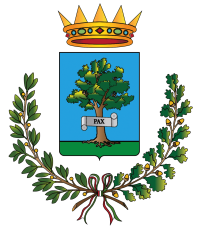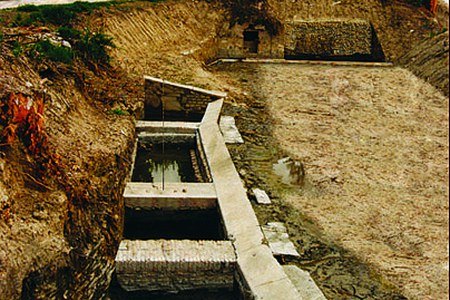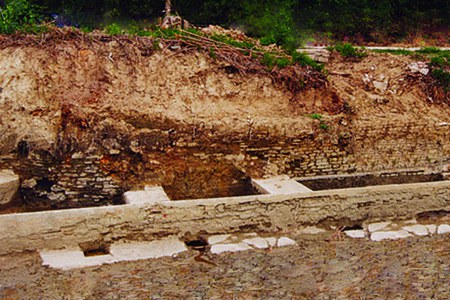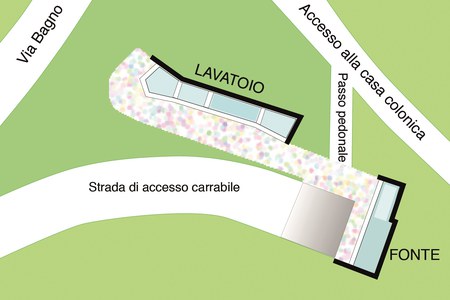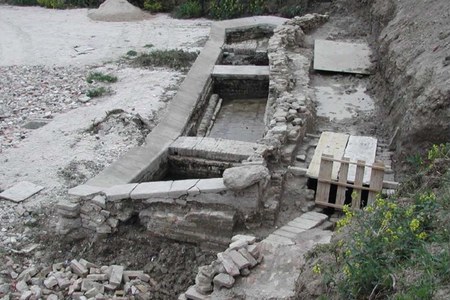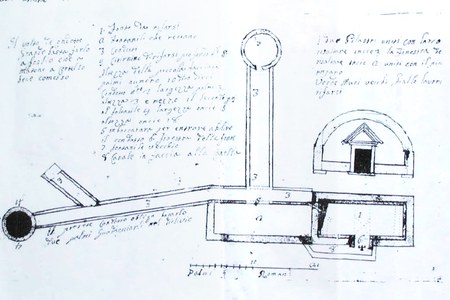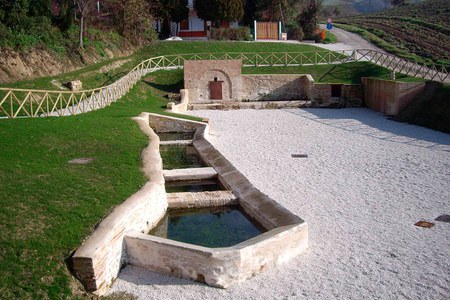Bath spring
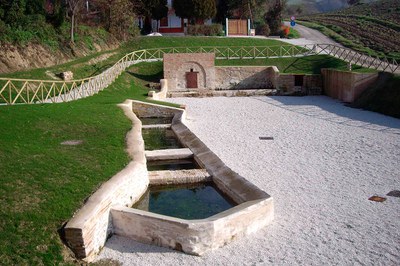 Historical research dates the construction of the spring to the beginning of the 16th century. A restoration project dating back to 1798 was found in the municipal archive and it shows the reconstruction of part of the spring with its inflow ducts. The project finds confirmations and similarities in the artifacts brought to light during the excavations. From the second half of the 19th century, the aqueduct, built to supply most of the citizens in Polverigi with drinking water, made the spring lose its main function. However it continued to be used as a public washhouse until 1934, when the Municipal Administration assigned the same task to the former Church of S. Vincenzo Ferreri in Matteotti Street. The source was then used as drinking trough for livestock until the rural aqueduct came into operation in 1965.
Historical research dates the construction of the spring to the beginning of the 16th century. A restoration project dating back to 1798 was found in the municipal archive and it shows the reconstruction of part of the spring with its inflow ducts. The project finds confirmations and similarities in the artifacts brought to light during the excavations. From the second half of the 19th century, the aqueduct, built to supply most of the citizens in Polverigi with drinking water, made the spring lose its main function. However it continued to be used as a public washhouse until 1934, when the Municipal Administration assigned the same task to the former Church of S. Vincenzo Ferreri in Matteotti Street. The source was then used as drinking trough for livestock until the rural aqueduct came into operation in 1965.
The gradual loss of functionality and several landslides led to its ultimate abandonment in the late 1960s. The spring consists of two small buildings forming an angle between them. The first consists of two tanks leaning against a wall which retains the ground behind where the water coming out of the catchment was collected and conveyed to the others. The second building ,a few meters away, was the washhouse consisting of 4 tanks placed in cascade with each other at a slightly lower level.
The site consisted of a clearing, slightly recessed into the ground, served by a small road of a few meters for the transit of carts and livestock to be watered and by a path from the village. Today, after the necessary restoration to bring it back to its original beauty, the spring is the focal point for a rest area along a bicycle and pedestrian path that connects the town Sports Center to Moon Park.
In the territory of Polverigi there were several other sources of spring water: some of them have been run out over time whereas others have come down to us. Among the latter, we have to mention the Ciuccia Spring and the Perna Spring, located along the municipal roads of the same name. From ancient time, the former was synonymous with very good water, bordering on the miraculous for the inhabitants of Polverigi, and drew long lines of people waiting to fill a bottle, jug or demijohn. A plaque fixed in the basin testifies to the existence of the spring since 1782. Moreover, the Perna Spring was used both to draw water for the population and to supply water to the splendid park of Villa Nappi, by a tunnel hundreds of meters long, much of which still exists.
